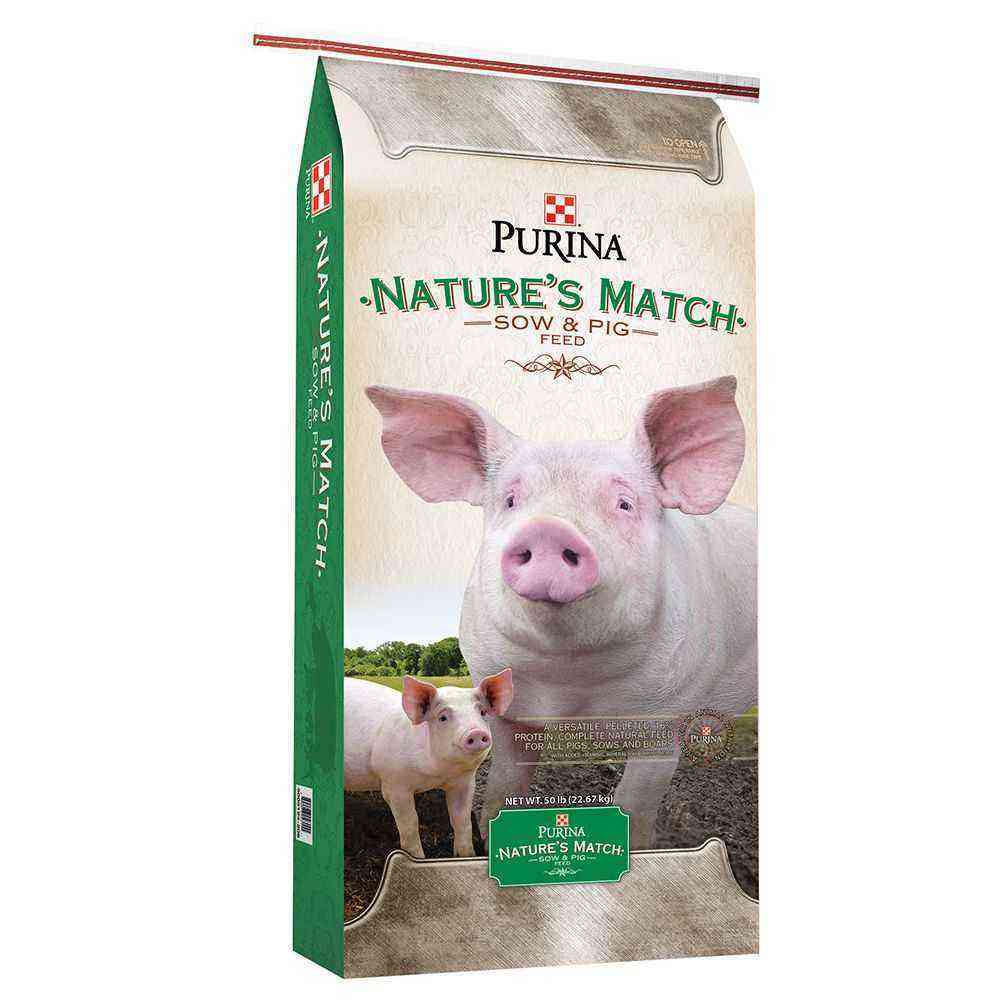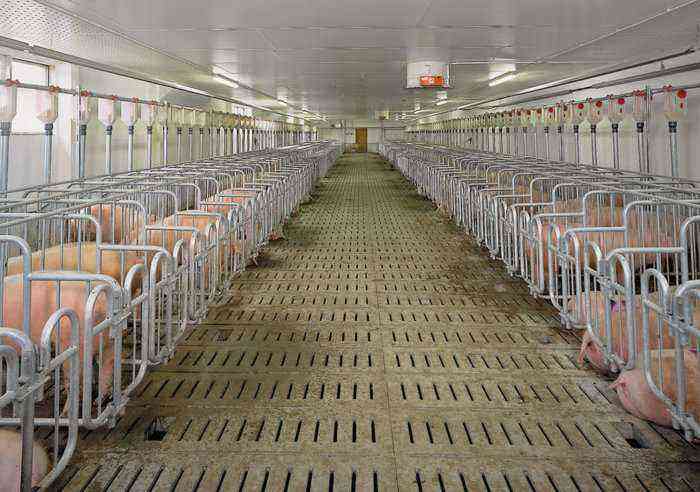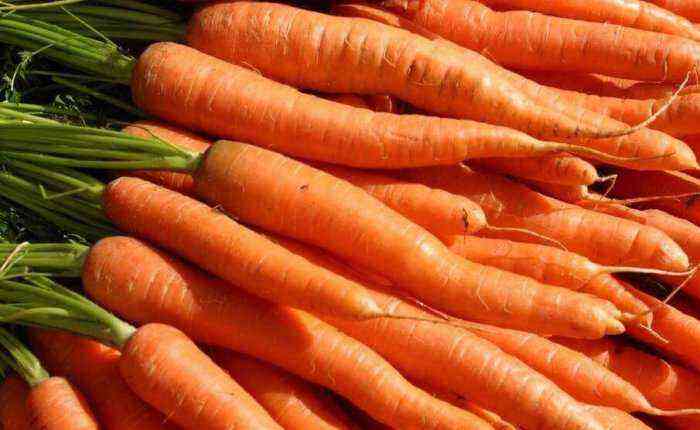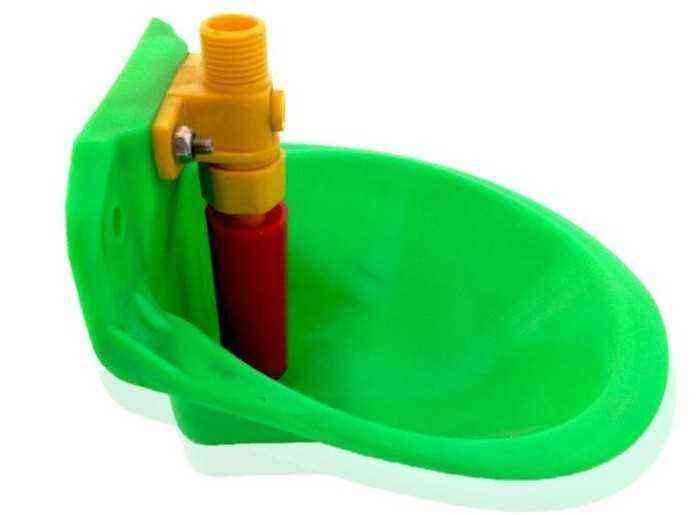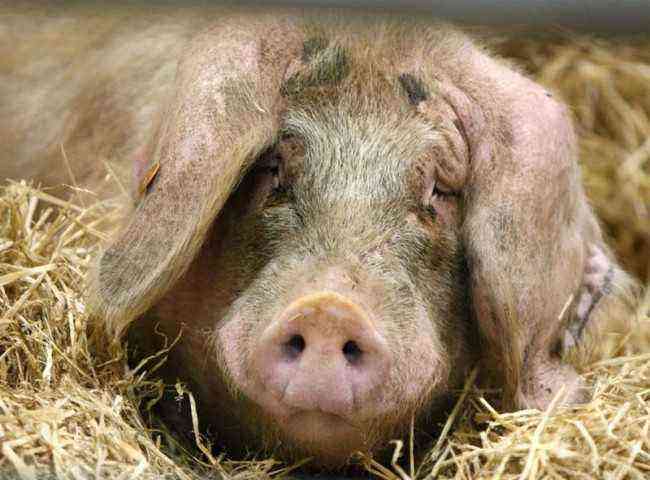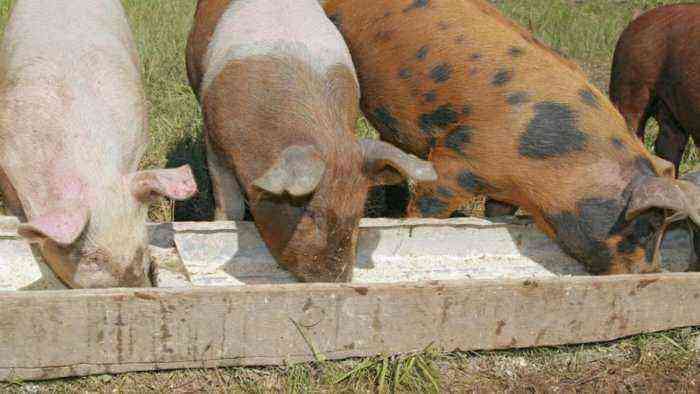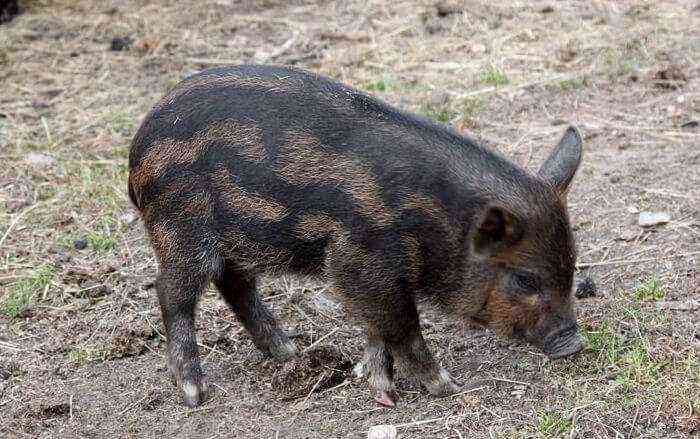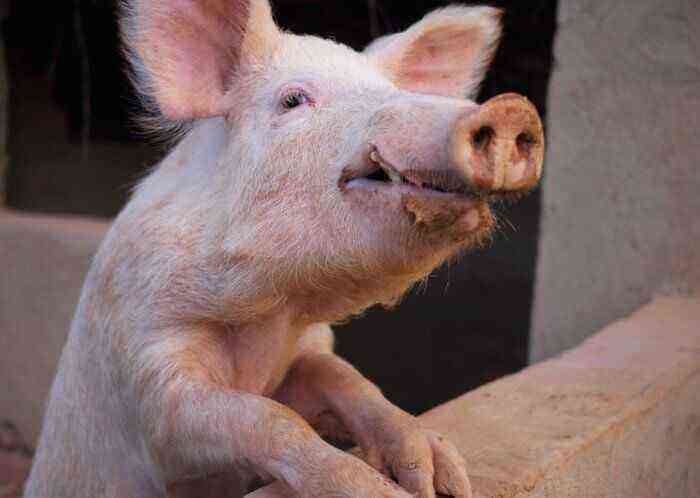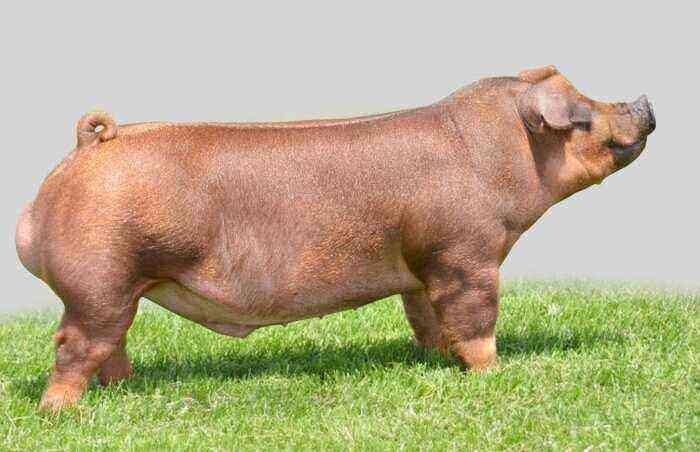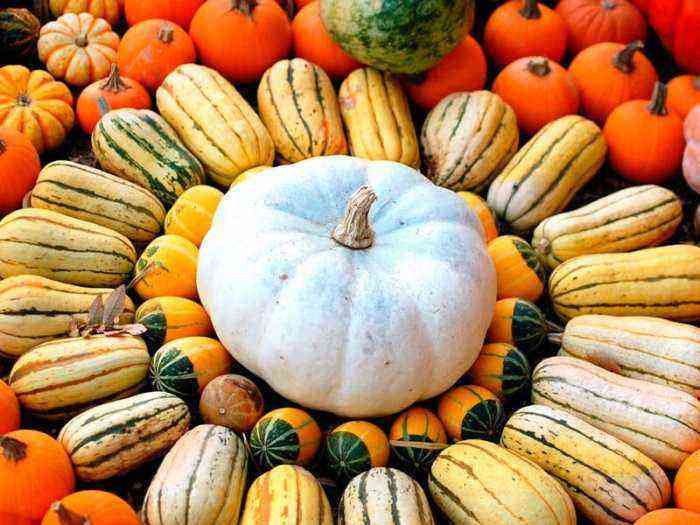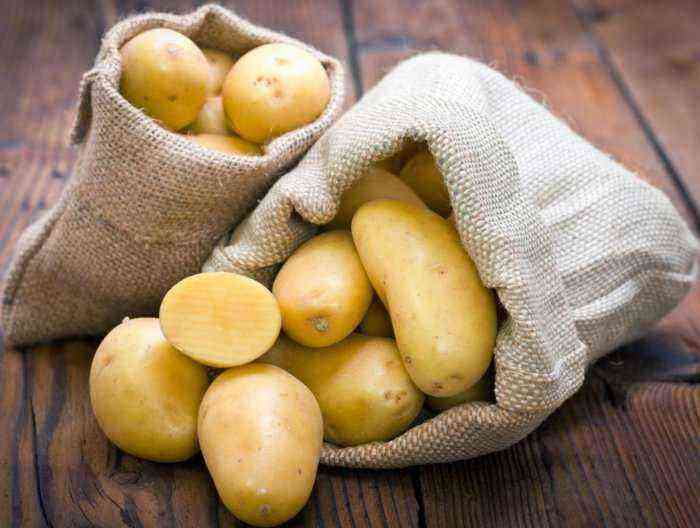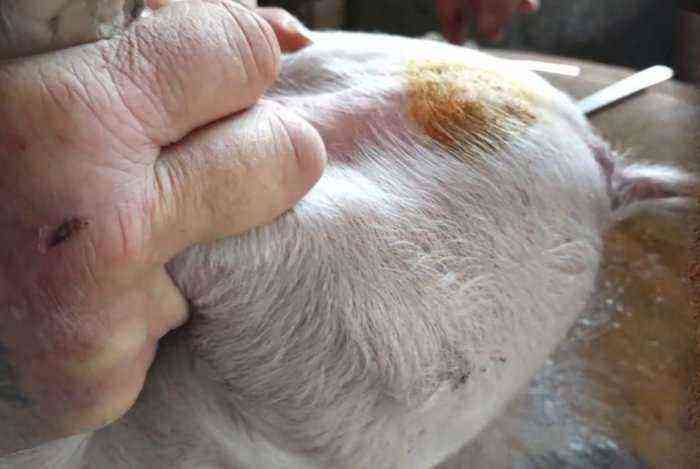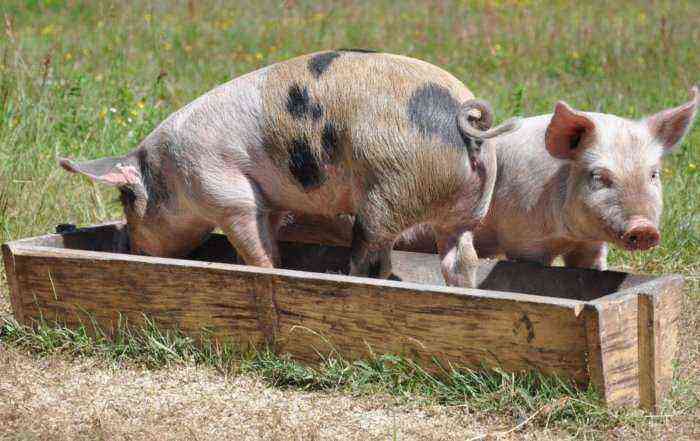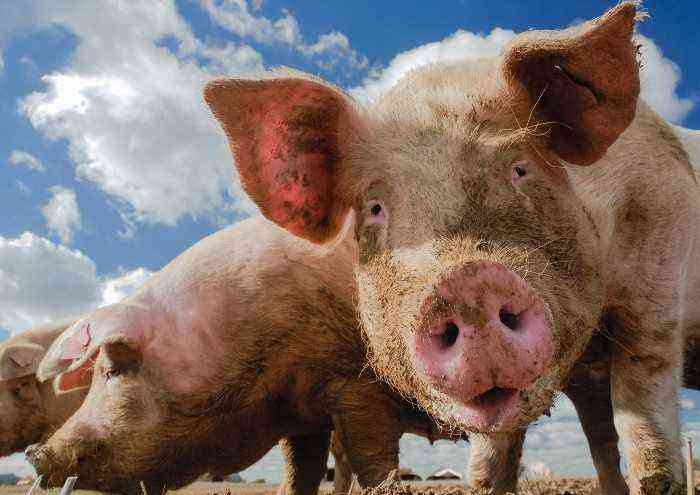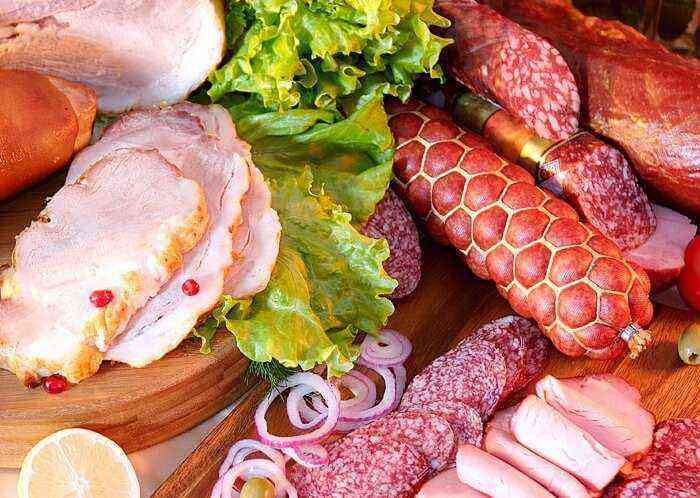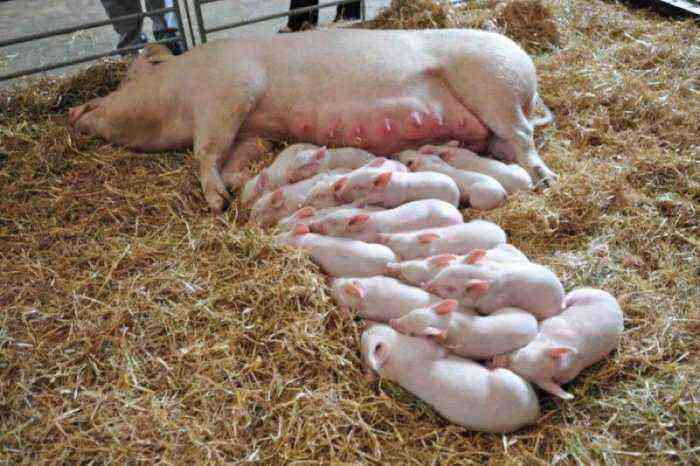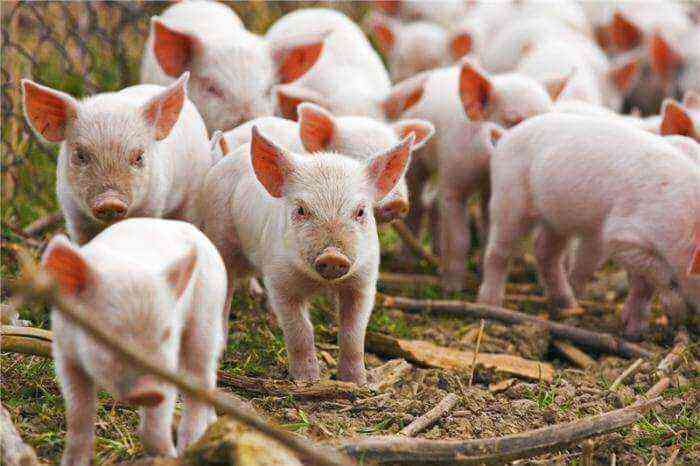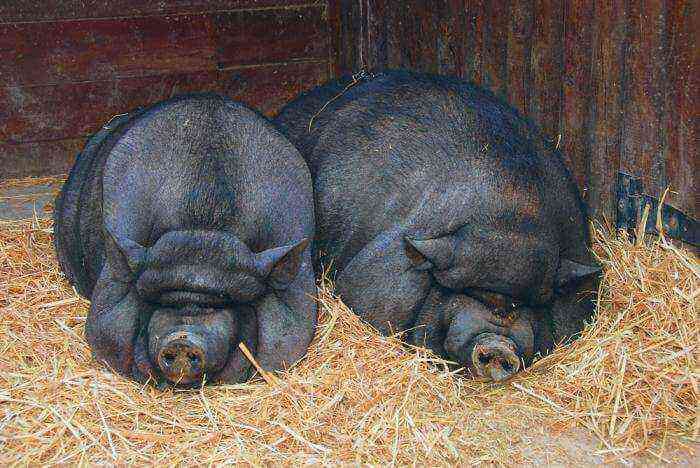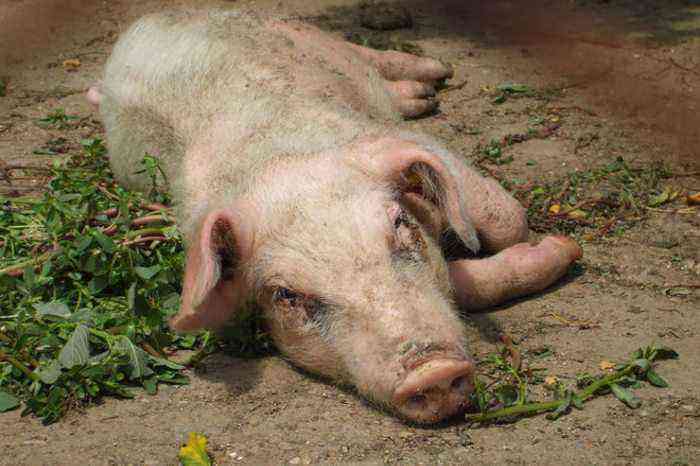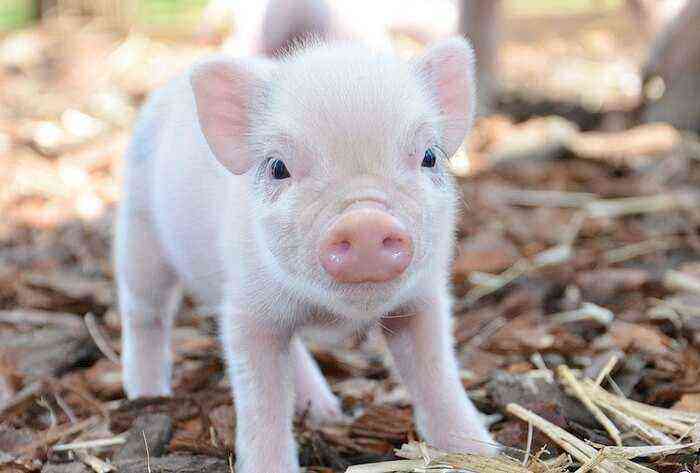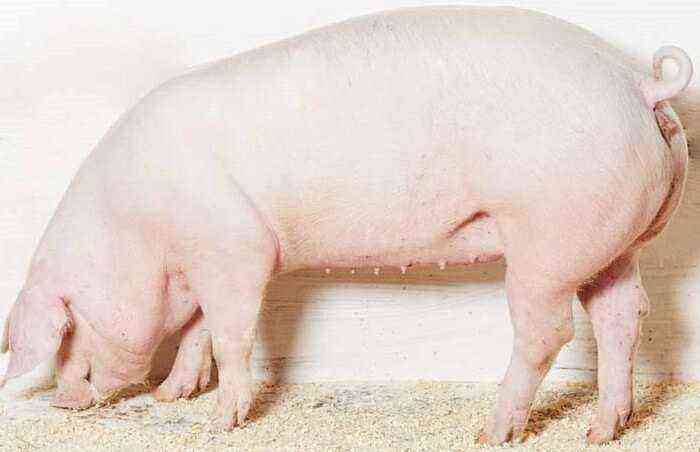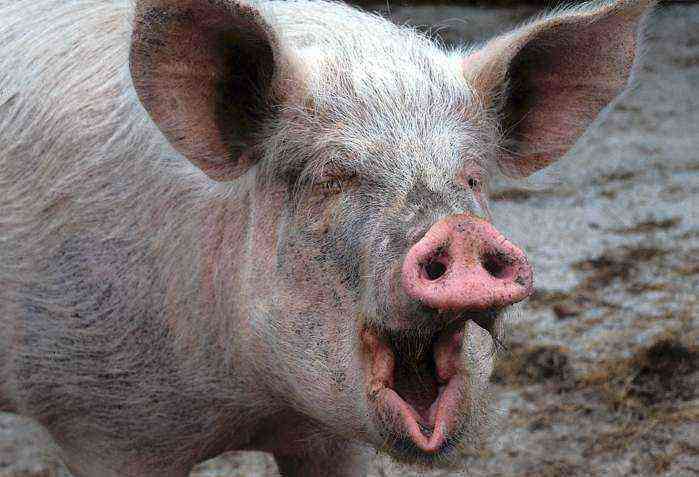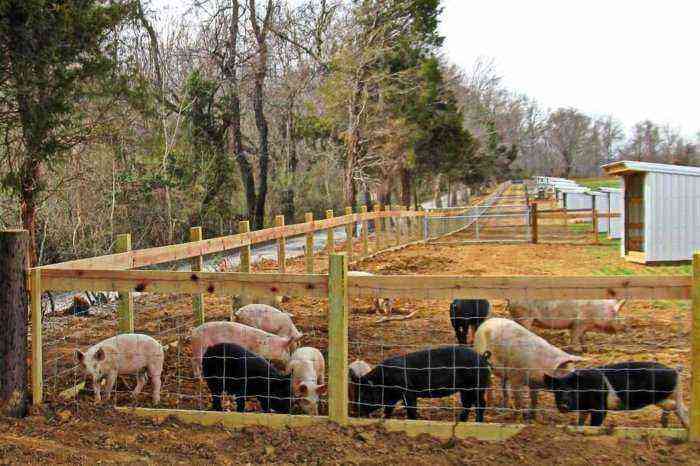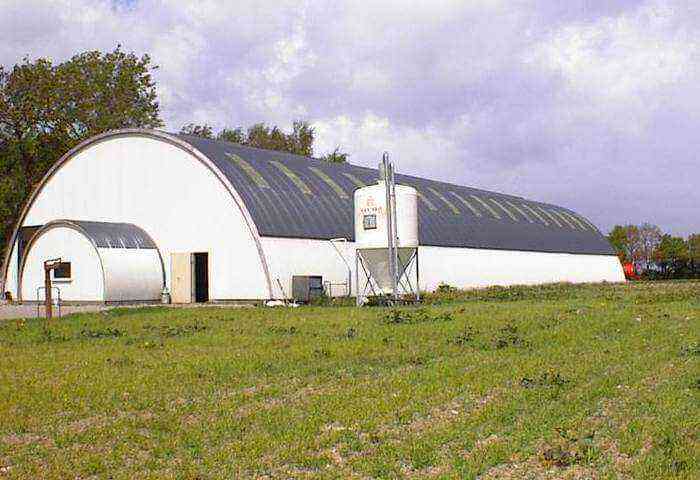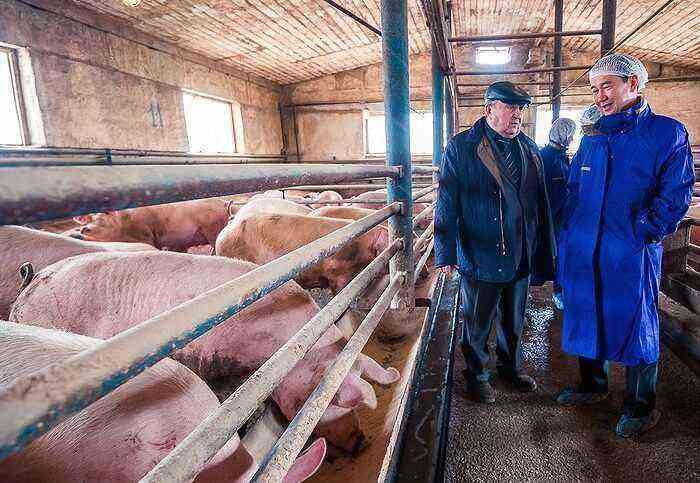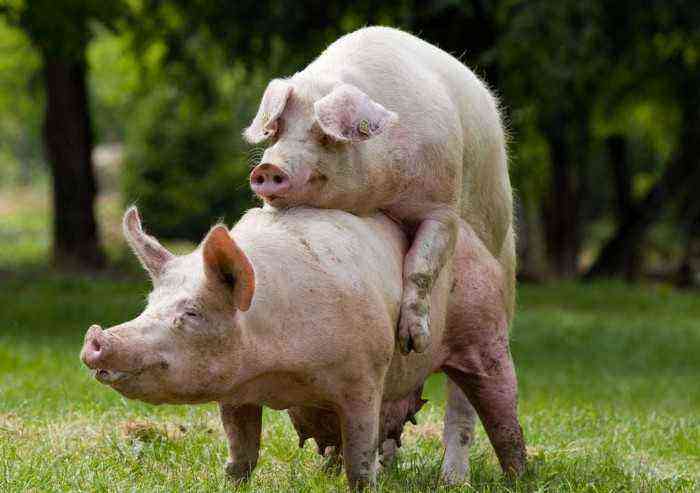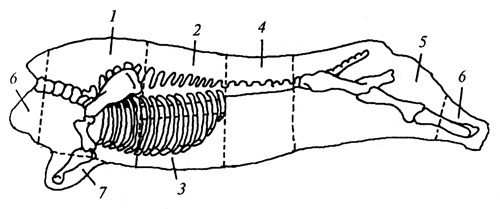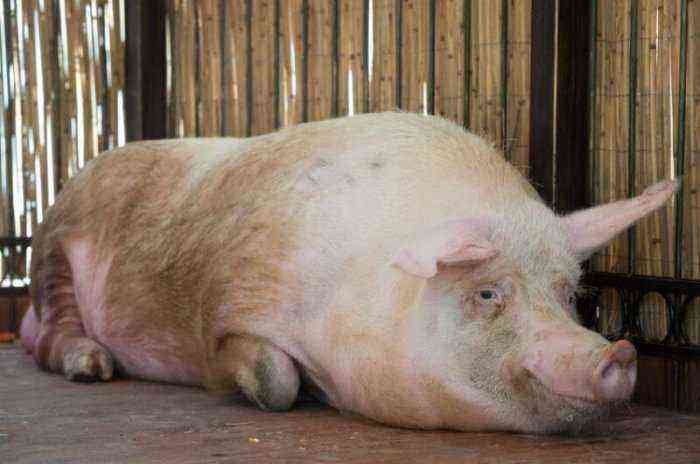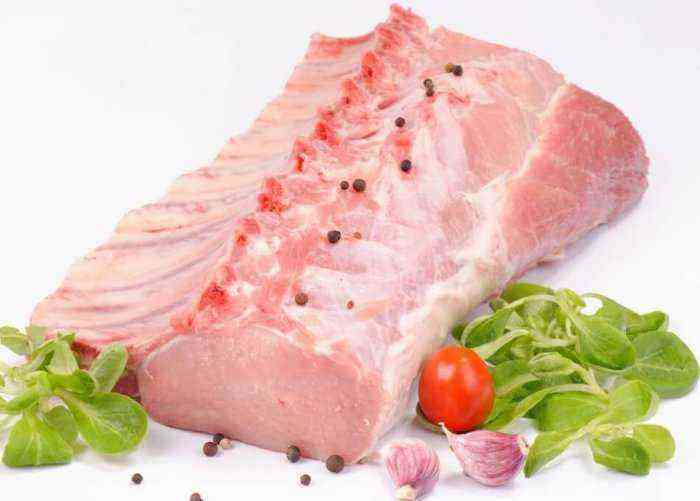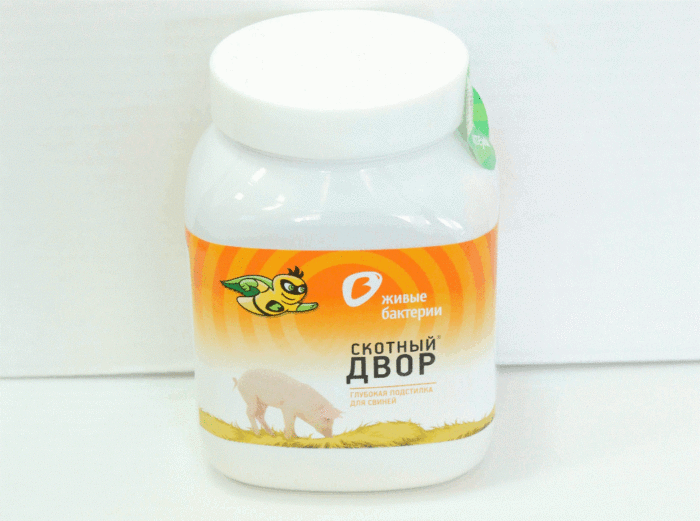When choosing a green culture, you should choose juicy, green, young plants with a high content of easily digestible nutrients, a lot of proteins. Let’s figure out which grass can be given to piglets, and which one will be dangerous to their health.
Pigs in the grass
Useful herbs for piglets
Experts recommend using plants in which the ratio of proteins and carbohydrates corresponds to 1: 2,5-1: 3,5. With the same pluses of fodder crops, grasses are preferable, which:
- not afraid of trampling;
- grow several times over the summer;
- provide juicy and tender food.
Legumes (alfalfa, clover, sweet clover, seradella)
These crops are important in the process of raising animals, especially if they are perennial. When eating it, pigs receive the following components:
- vitamins;
- proteins;
- minerals (calcium, etc.).
Cultivated sowing grasses are alfalfa – juicy, young and tender. In comparison with other legumes, it is considered the best, as it is able to produce large yields. Animals can consume alfalfa without restrictions in quantity. It can be used as feed long before flowering, at a height of no more than 10-15 cm. The younger the grass, the more protein it contains. In addition, it is more readily eaten by animals. During flowering, it becomes very coarse, it becomes less in demand by animals.

alfalfa (Medicago sativa)
Clover is also used in a young state, since its beneficial properties disappear in the process of growth. At the beginning it contains:
- protein;
- fiber.
There are more of these components during the flowering period, but at this time pigs are not so willing to use it. Sweet clover is a very good fodder plant. It contains coumarin, which gives the herb a bitter taste, so pigs become accustomed to eating it over time. It is necessary to offer the plant to animals at a young age, when the length reaches 7-15 cm (young sweet clover contains less coumarin). The grass quickly coarsens, which is especially noticeable in the flowering process. During this period, pigs refuse to use it. It becomes more than a meter in height, its ends remain fresh and tender, but they are inaccessible to animals.
Seradella is not very common in Russia. It provides very valuable and nutritious hay, used as a pasture. In this case, the animals are driven out to her fields before flowering begins. Grass is also suitable for silage.
Cereals (winter rye, corn, Sudan grass)
In another way, it is called winter wheat. It is used as the earliest crop for green fodder. After two or three weeks in the spring, after the snow has melted, rye provides a rich and very juicy green fodder, which pigs love so much.
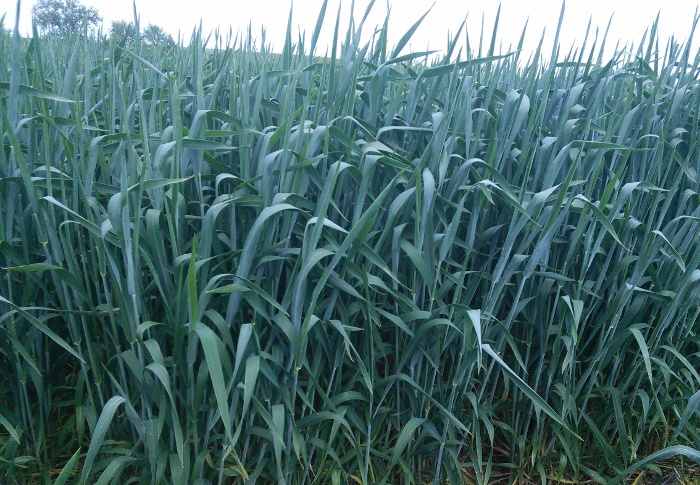
Ozymaya wheat
Corn can be attributed to the group of carbonaceous feeds. The plant is trampled down, so it is often fed cut or cut in a mixture with concentrated nutrition. During the dry period, it is used as a pasture. In a dry and warm climate, Sudanese grass produces significant yields of greenery and hay. In arid areas, it is of great interest.
Cruciferous (turnip, rapeseed, cabbage)
Of the annual crops, rape represents the best option for green fodder. Animals of any age eat this culture well. Thanks to the plant, their digestion improves (due to the high content of sulfur). Rapeseed is especially useful for lactating queens and young animals, but not all varieties are recommended for use. Only sweet dwarf Japanese grass (Essex) is suitable for animals. Rapeseed is valuable because of its rapid growth. It is sown in early spring and after a month and a half gives food for animals. It should be offered to pigs when it has grown by 15-20 cm. It is not recommended to keep animals on rapeseed pastures for a long time: complete grazing of the grass significantly delays its growth.
After grazing pigs, at least three to five leaves should remain. In this case, the plant will grow back quickly and can be used 3-4 more times per season. Cabbage for feeding pigs is used little by little. It is necessary to accustom in minimal quantities – 300-500 g per animal. Gradually, the intake is brought to 1-3 kg. If it is necessary to slaughter an animal, then a month before that it is recommended to refuse such complementary foods: otherwise the meat will have a sour taste. It is not recommended to take the product to pregnant women: they may experience indigestion. Turnip is used in autumn and early winter, and its roots are recommended as livestock feed in late August and early September.
Poisonous herbs
The farmer must monitor the condition of the animals and take timely measures to normalize their condition. He needs to know about herbs that can harm pigs.
Milestone poisonous
This plant is especially dangerous. It can be found in damp areas. The milestone has poisonous stems, leaves and rhizomes. Animals can eat it in early spring. Signs of poisoning can be seen 1,5-2 hours after eating.
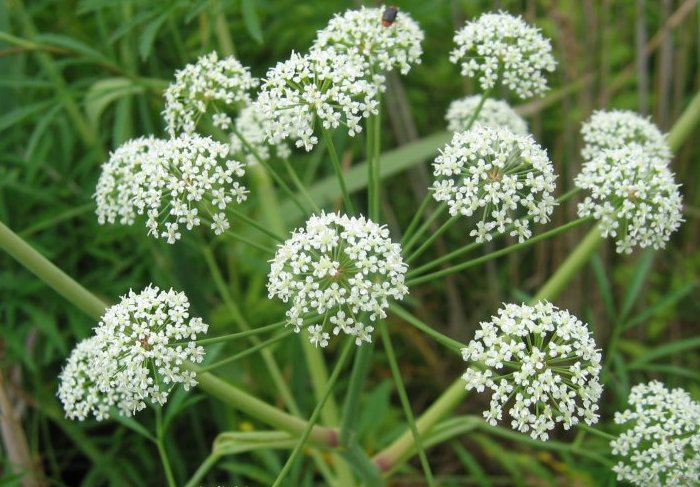
Milestone plant poisonous
Datura
It is found in neglected vegetable gardens, wastelands. All parts of the plant are considered poisonous, the fruit being the most dangerous. Most often, young animals are poisoned, and adult animals do not touch dope, as it exudes an unpleasant odor.
Čemerica
It can be found in sparse forests, in wet meadows. At a young age, it is especially poisonous, and in a mature rhizome is dangerous. Most often, poisoning occurs when taking hay, hay, clogged with a plant. In the process of ensiling and drying, its poisonous properties remain.
Buttercup
It grows along the banks of rivers and ponds. In early spring, animals tend to try it: it is during this period that it is especially dangerous. If the plant is dried, then the poisonous properties will disappear.
Nightshade
This plant grows in wastelands, roadsides, landfills, abandoned vegetable gardens. All above ground parts are poisonous, especially unripe fruits.
Mustard
It is dangerous when flowering. The plant provokes inflammation of the gastrointestinal tract.
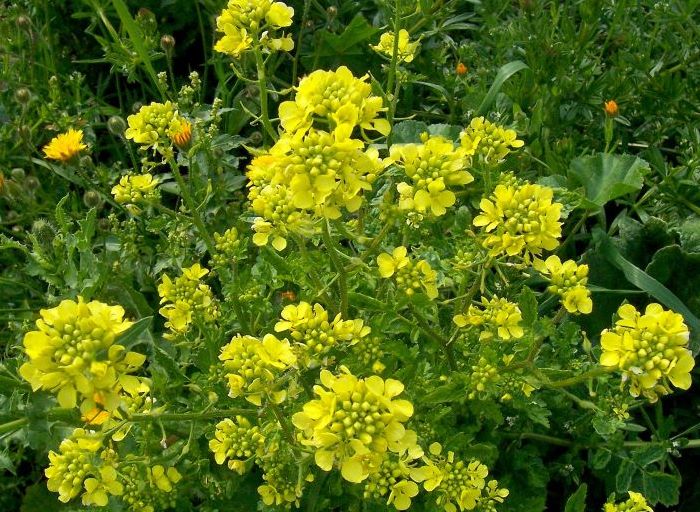
Mustard is dangerous during flowering
Signs of poisoning
Most often, the problem covers a large number of pigs, passes rapidly, is accompanied by a quick death. In case of poisoning in an animal, you can notice:
- excited or depressed state;
- convulsions;
- muscle tremors;
- sometimes – paralysis;
- stomach problems;
- shortness of breath;
- rapid pulse and breathing;
- sometimes blood in the urine.
Signs may differ, which makes it difficult to establish the causes that provoked the problem. In this regard, feed, the contents of the intestines and stomach are examined in veterinary laboratories.
Legumes are considered the most useful for animals. They are rich in useful components that contribute to the proper development of pigs. The farmer should not forget about dangerous plants, because of which the animal can die quickly. The owner must be aware of the signs, he needs to take timely action when poisoning is confirmed.
